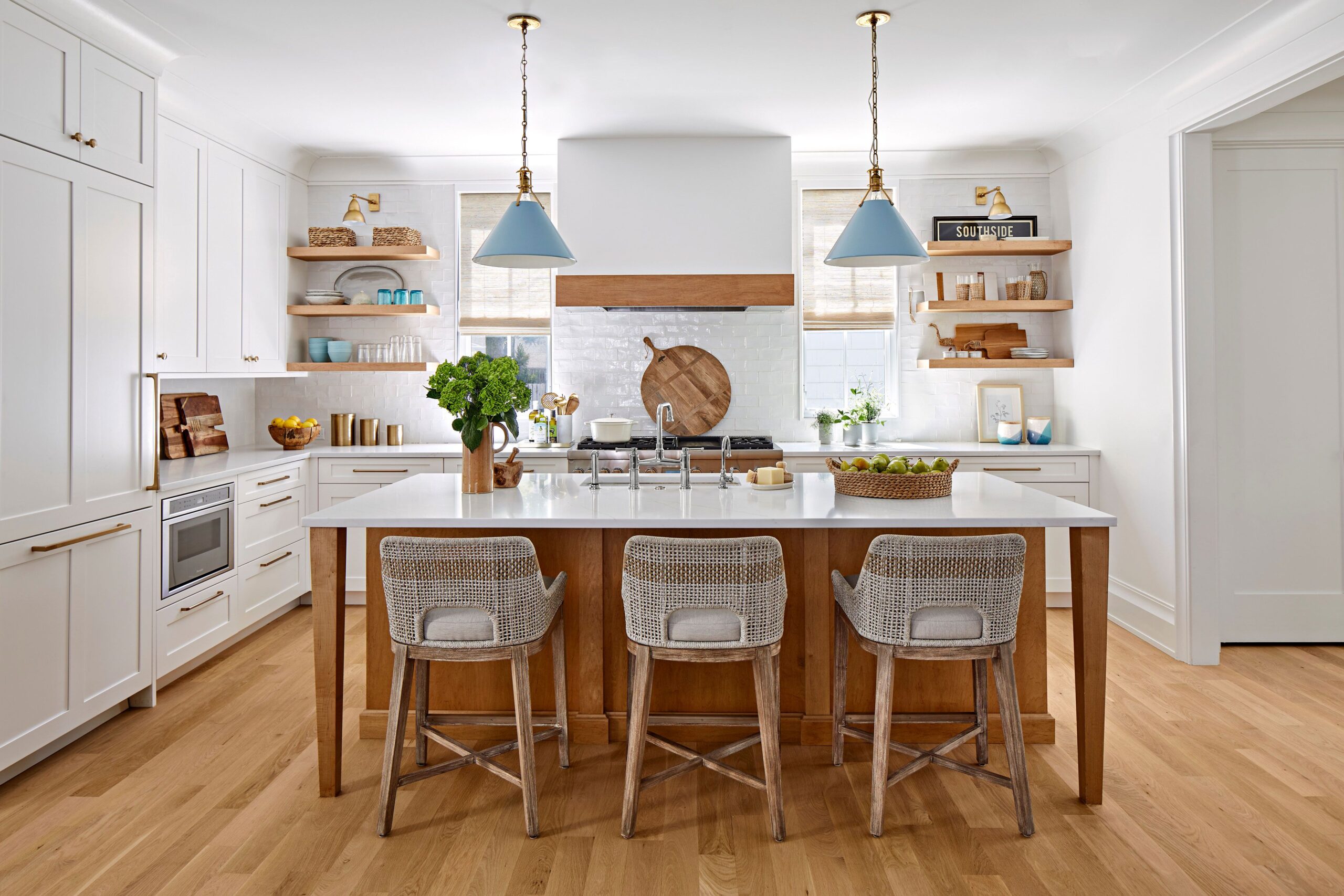
Your Kitchen Isn’t Truly Clean Until You Degrease Your Ceiling—Here’s How
Key Takeaways
- Kitchen ceilings can be degreased with solutions made of dish soap, vinegar, baking soda, and commercial degreasers.
- If you have popcorn or textured ceilings, avoid using vinegar and be cautious when scrubbing the surface to avoid damage.
- Always test the cleaning solution of your choice in an inconspicuous area first to make sure it won’t damage the ceiling’s material, and never use excessive moisture.
Range hoods and over-the-range microwaves with exhaust fans can help capture some grease while cooking, but they don’t catch it all. Airborne grease particles can settle on the ceiling in your kitchen, leading to a noticeable buildup that often appears yellowish or gray. This buildup not only makes your kitchen look dirty but can also affect its freshness and smell. While most people regularly clean their appliances, countertops, and cabinets, the kitchen ceiling is often overlooked. Use one of our four recommended methods to degrease and deep-clean your ceiling and keep your cooking space looking, feeling, and smelling fresh.
Before You Begin
Consider your ceiling’s material and texture before you dive into this cleaning procedure. If you have smooth, painted drywall ceilings, the stain should be fairly easy to remove. If you have textured or popcorn ceilings, it might be more difficult to get into the crevices. With either material, however, do not harshly rub at the stains or use excessive moisture to avoid damage to the ceiling. If your ceiling is made of wood, make sure any cleaning products you use are wood-safe.
Cover your kitchen with tarps or sheets to protect it from any falling debris or dripping cleaning solution. If you have popcorn ceilings, wear protective gear like a dust mask, safety googles, and gloves.
If your home was constructed before 1990, consider testing your ceiling for asbestos before you clean it.
How to Degrease the Kitchen Ceiling with Dish Soap
This method works best with a grease-fighting formula dish soap. This is an affordable option that is usually safe on all ceiling materials. Always test on an inconspicuous area first to be sure.
- Dust the ceiling with a microfiber cloth or vacuum. If you’re using a vacuum, use a soft brush attachment to remove any dust and debris. This is ideal for popcorn ceilings.
- Mix water and dish soap. Fill a bucket or bowl with warm water and several drops of dish soap to create your cleaning solution.
- Clean the ceiling with the solution. Dip a soft cloth or sponge into the water and soap mixture and gently wipe the ceiling in circular motions. Use a soft-bristle toothbrush to clean stubborn grease stains. Do not apply excessive pressure or moisture to the ceiling.
- Remove soap residue. Wipe the area with a clean cloth dipped in plain water.
- Dry the ceiling. Absorb any excess moisture with a dry cloth. Let the ceiling air-dry before cooking in the kitchen.
How to Degrease the Kitchen Ceiling with Vinegar
Vinegar can be a powerful and natural solution to remove grease buildup, mold, and mildew. However, avoid using it on textured ceilings like popcorn.
- Dust the ceiling with a microfiber cloth. You can also use a lint roller to remove dust and debris.
- Mix water and vinegar. Create a solution of one part diluted vinegar and one part water in a spray bottle or bowl. For stubborn buildup, use undiluted vinegar instead.
- Clean the ceiling with the solution. Dip a microfiber cloth or sponge into the mixture and wipe it onto the ceiling. If you use a spray bottle, lightly spray the solution onto the ceiling without soaking it. Use a soft-bristled brush to gently scrub the area.
- Rinse with plain water. Wipe the area with a clean cloth dipped in clean water.
- Wipe again with a dry cloth. Absorb any excess moisture with a clean cloth. Let the ceiling air-dry before cooking again.
How to Degrease the Kitchen Ceiling with Baking Soda
Baking soda is a gentle yet effective agent for removing grease buildup on ceilings. Its abrasive texture is great for scrubbing away tough stains.
- Remove dust and debris on the ceiling. Use a dry microfiber cloth, lint roller, or vacuum with a soft brush attachment to dust the ceiling before cleaning.
- Create the baking soda and water solution. Mix 2 tablespoons of baking soda with 2 cups of warm water. If you need to target stubborn areas, make a thick paste with baking soda and a tablespoon or two of water.
- Clean the ceiling with the solution or paste. Dip a soft cloth or sponge into the baking soda and water solution and gently apply it lightly to the ceiling. Let it soak for 5 to 10 minutes before gently rubbing the area with a cloth or sponge for smooth ceilings and dabbing for textured ones. The same method applies when using the thick paste.
- Remove baking soda residue. Wipe the area with a cloth dipped in clean water.
- Dry the ceiling. Soak up any residual moisture with a clean cloth. Let the ceiling air-dry before cooking in the kitchen.
How to Degrease the Kitchen Ceiling with Commercial Degreaser
Skip the DIY cleaning solutions and use a commercial degreaser instead. Make sure the kitchen has proper ventilation for this method.
- Clean the ceiling with a cloth or vacuum to remove dust.
- Apply the degreaser. Follow the degreaser’s instructions to apply it to the ceiling. Make sure it is the appropriate product for your ceiling’s material.
- Clean the ceiling with the degreaser. Use a cloth, sponge, or soft-bristled brush to gently scrub the grease stains away.
- Rinse degreaser. Wipe the area clean with a damp cloth.
- Dry the ceiling. Absorb any excess moisture with a dry cloth. Let the ceiling dry completely before cooking.










